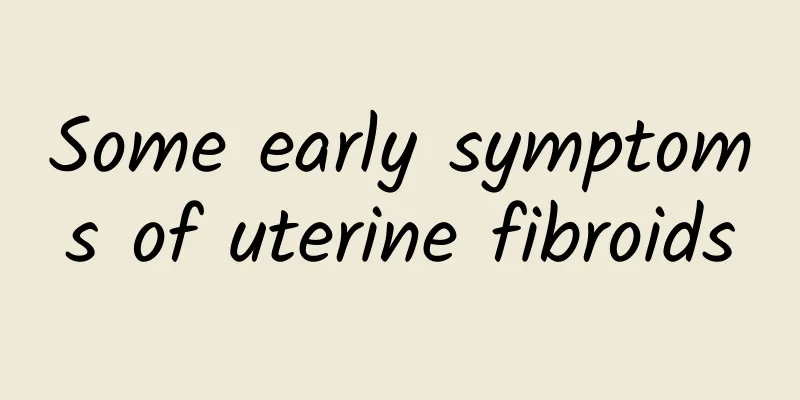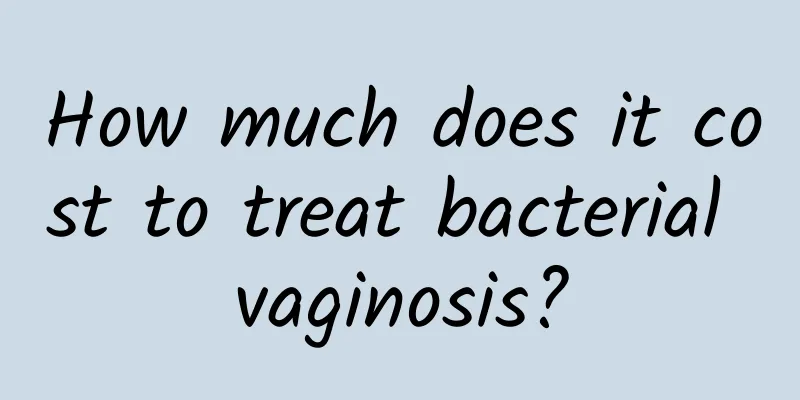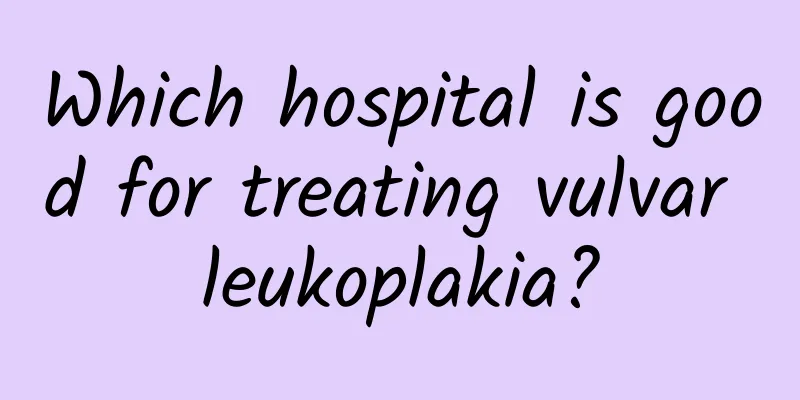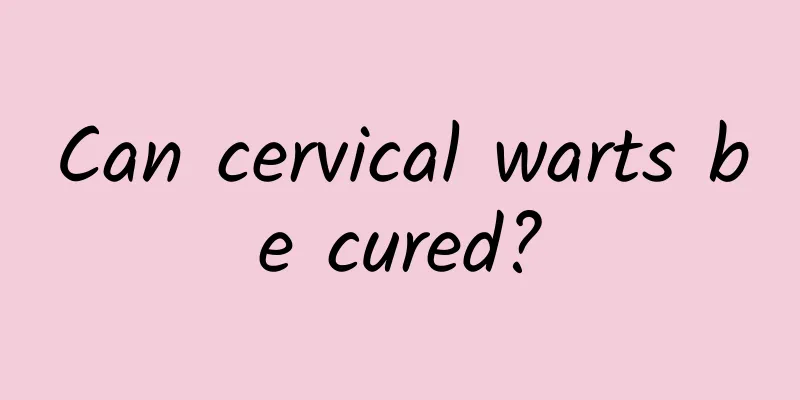What are the treatments for uterine fibroids? Is the incidence of uterine fibroids high?
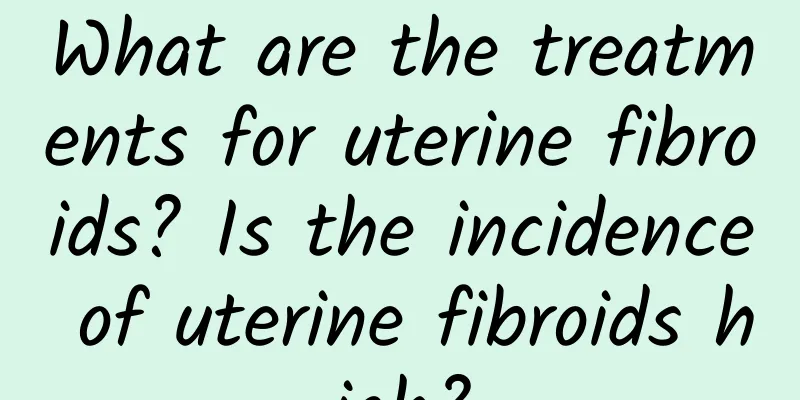
|
Uterine fibroids are one of the most common gynecological tumors. The current incidence rate is around 20%-40%, mostly seen in women aged 30-50, but the incidence is getting younger and younger. There are even reports of uterine fibroids being found on college campuses. Uterine fibroids can easily cause severe anemia, infertility, and even malignant transformation, which is life-threatening. Conservative treatment, surgical treatment and minimally invasive treatment are the main treatments for uterine fibroids. 1. Conservative treatment Conservative treatment of uterine fibroids must meet the following conditions: first, the tumor size does not exceed 6 weeks; second, the patient is postmenopausal and asymptomatic; third, the patient is near postmenopausal and can reduce bleeding through non-surgical treatment; fourth, the patient cannot tolerate surgery. Conservative treatment mainly includes expectant treatment and drug treatment. 1. Expectant treatment Suitable population: patients aged 40-50 years and above, who have entered menopause and have no obvious clinical symptoms such as bleeding and pain. Specific method: No medication or other treatment. Gynecological internal examination is performed every 3 months, and B-ultrasound examination is performed. If there is no rapid growth of the tumor, and the bleeding and pain symptoms do not worsen, it can be expected that the uterine fibroids will shrink with aging and the decline of sex hormone levels. 2. Medication Advantages: The current conservative treatment is mainly drug therapy, which can avoid the pain and sequelae caused by surgery. Generally, if drug treatment is not ideal, then minimally invasive or surgical treatment should be considered. Traditional Chinese medicine treatment: regulates the endocrine system and microcirculation of female patients, regulates blood and qi, disperses blood stasis and resolves nodules, and eliminates uterine fibroids from the source. Western medicine treatment: androgen therapy. For women approaching menopause, with menstrual disorders and no malignant changes in the endometrium, methyltestosterone is often used for treatment. 2. Surgical treatment Applicable population: Myoma size is equivalent to a uterine pregnancy of more than one and a half months. In addition, if the myoma grows rapidly, the tumor protrudes from the abdominal cavity and has a tendency to twist, surgical resection should also be performed. Of course, when deciding on surgery, other indications should also be considered, such as severe anemia, heart disease, general condition, etc. 1. Hysterectomy Applicable population: patients with large fibroids, severe symptoms, ineffective conservative treatment or malignant diseases. Advantages: The uterus is completely removed and symptoms are eradicated. Disadvantages: Patients lose their fertility and no longer have menstruation. 34% of women experience ovarian failure and menopausal symptoms within 2 years after surgery. Hysterectomy affects the integrity of the pelvic floor, shortens the vagina, and affects sexual life. After hysterectomy, premature ovarian failure reduces estrogen and increases cardiovascular morbidity. Patients are prone to adverse reactions such as obesity, hypertension, heart disease, and osteoporosis. Patients need a 4-8 week recovery period after surgery. 2. Laparoscopic myomectomy Advantages: small incision, less pelvic adhesion formation, fast recovery after surgery, most patients can walk and eat in the afternoon; less wound pain and postoperative fever, seldom use of sedatives and analgesics; small and beautiful incision, in line with the aesthetic psychology of young people; shortened hospitalization time, generally 48 hours after surgery. 3. Minimally invasive coagulation technique This is a cutting-edge medical technology that integrates high-temperature coagulation, modern imaging, guidance, and electronic technology. Suitable for the following groups: patients with large uterine fibroids, pelvic obstruction, and obvious clinical compression symptoms. Patients with increased uterine volume, reaching the third month of pregnancy, or suspected sarcoma-like changes. Patients with significant increase in menstrual volume, or even secondary anemia. Patients with surgical contraindications or unwillingness to undergo surgery. Method: Under the guidance of navigation and positioning technology, 4-8 superconducting needles with thermocouples are introduced through the vagina to accurately locate uterine fibroids. The superconducting needle is minimally invasively inserted into the center of the lesion, controlled by a computer, accurately monitoring the temperature of the tissue around the superconducting head, and immediately opens to release huge energy and accurately control the temperature, so that the lesion is dehydrated, solidified, and shrunk during the thermal coagulation process, and then falls off, absorbed, or even disappears during the metabolic process, so that the uterine structure and function return to normal. Lesions from cm to 5 cm can be cured at one time, and huge fibroids can be killed multiple times at the same time. Advantages: Preserve the uterus, no bleeding, less pain, no hospitalization, quick recovery. This method is recognized by the US authorities as the best choice for treating uterine fibroids. Disadvantages: It is ineffective for pedunculated subserosal fibroids, fibroids with malignant transformation, and acute and chronic genital organ inflammation. Surgery can only be performed after the inflammation is controlled. We have skilled endoscopists and anesthesiologists, four-dimensional color ultrasound, electronic hysteroscopy and laparoscope, blood recovery machine and other advanced equipment. We are the first to develop B. With super assistance, we use electronic hysteroscopy and laparoscope to dig out fibroids. No matter the size of the fibroids, no matter how many fibroids there are, no matter where the fibroids grow, no matter whether there is a fertility requirement, no laparotomy, no hysterectomy, no blood transfusion, no recurrence, no endoscopy fee requirements, and maximize the integrity of the uterus. |
<<: 8 manifestations of uterine fibroids and how to treat uterine fibroids
>>: How to perform uterine fibroid surgery and what are the common treatments for uterine fibroids?
Recommend
Postpartum fruit bomb: avoid these five high-sugar fruits
During the confinement period, mothers emphasize ...
Pay attention to the prevention of vaginitis
Vaginitis brings a lot of unspeakable suffering t...
What expectant mothers need to know about threatened abortion
After a woman becomes pregnant, she will experien...
Experts answer: Does mild cervical hypertrophy require treatment?
Many people are at a loss as to what to do after ...
What are the symptoms of hyperplastic vulvar leukoplakia?
What are the symptoms of hyperplastic vulvar leuk...
Why do I gain weight no matter how much I eat? Obesity genes are to blame
[Key Points]: Obesity genes seem to make some peo...
Treatment of pelvic effusion
Treatment of pelvic effusion: Treatments for pelv...
Here are some ways to treat dysmenorrhea
Dysmenorrhea is a common problem for women during...
What Chinese medicine can't be eaten for uterine adenomyosis? What food and fruit can't be eaten for uterine adenomyosis?
Uterine adenomyosis is a common gynecological dis...
Eat happily so that you can lose weight last! Are you tired of losing weight? Try the new carb cycling diet
"Breaking ketosis" and "exploding ...
Does female cervical erosion need to be treated? Several precautions for treating cervical erosion
Cervical erosion is the most common type of chron...
Early pregnancy test cannot rule out ectopic pregnancy
Ectopic pregnancy refers to the phenomenon that t...
Breaking down the key causes of pelvic inflammatory disease
Clinically, many people do not understand the cau...
Which hospital is better for abortion?
For abortion, it is generally better to choose a ...
There are three main types of ovarian cysts.
Ovarian cysts are not as simple as you think. The...



